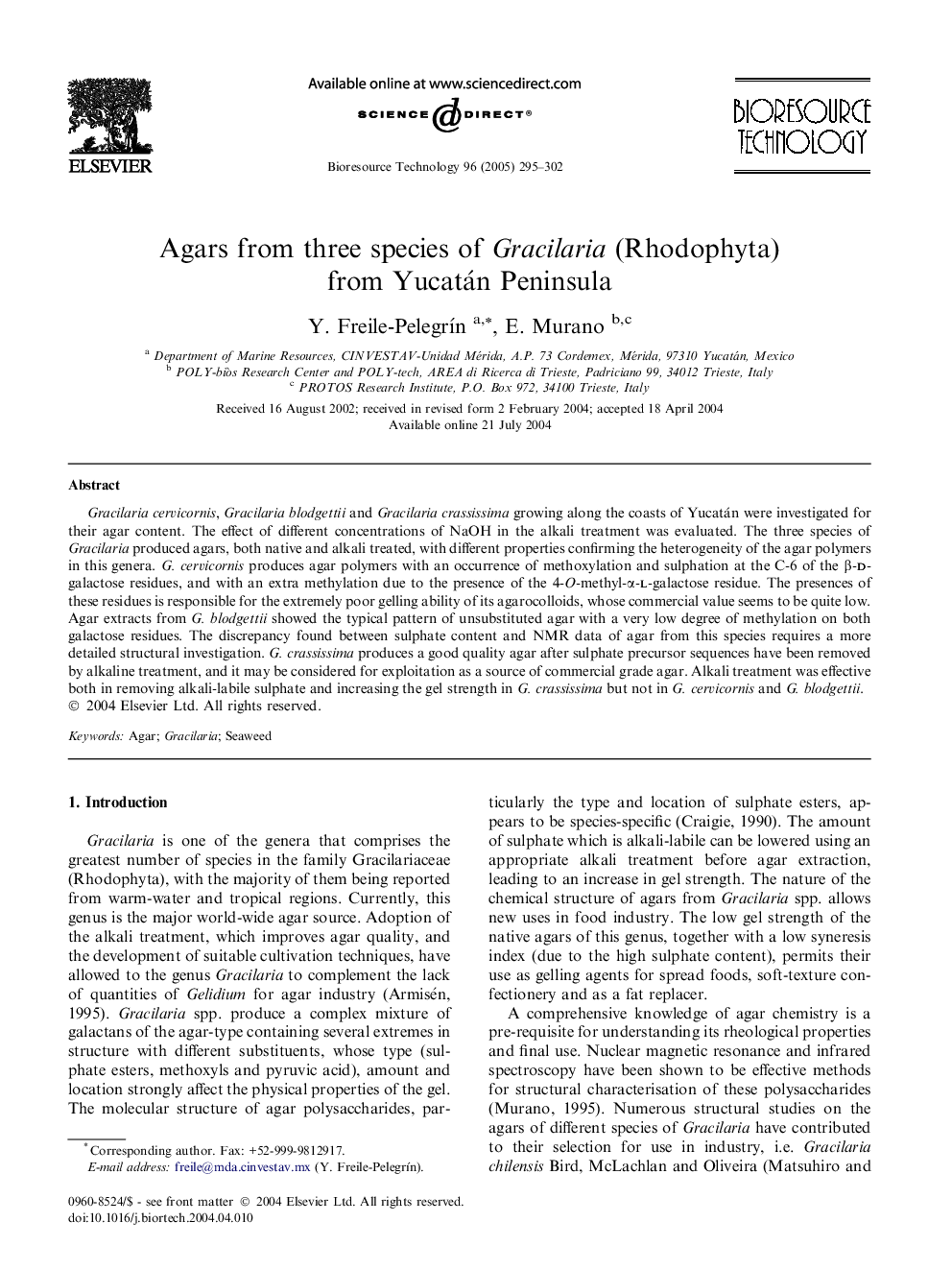| Article ID | Journal | Published Year | Pages | File Type |
|---|---|---|---|---|
| 10396250 | Bioresource Technology | 2005 | 8 Pages |
Abstract
Gracilaria cervicornis, Gracilaria blodgettii and Gracilaria crassissima growing along the coasts of Yucatán were investigated for their agar content. The effect of different concentrations of NaOH in the alkali treatment was evaluated. The three species of Gracilaria produced agars, both native and alkali treated, with different properties confirming the heterogeneity of the agar polymers in this genera. G. cervicornis produces agar polymers with an occurrence of methoxylation and sulphation at the C-6 of the β-d-galactose residues, and with an extra methylation due to the presence of the 4-O-methyl-α-l-galactose residue. The presences of these residues is responsible for the extremely poor gelling ability of its agarocolloids, whose commercial value seems to be quite low. Agar extracts from G. blodgettii showed the typical pattern of unsubstituted agar with a very low degree of methylation on both galactose residues. The discrepancy found between sulphate content and NMR data of agar from this species requires a more detailed structural investigation. G. crassissima produces a good quality agar after sulphate precursor sequences have been removed by alkaline treatment, and it may be considered for exploitation as a source of commercial grade agar. Alkali treatment was effective both in removing alkali-labile sulphate and increasing the gel strength in G. crassissima but not in G. cervicornis and G. blodgettii.
Keywords
Related Topics
Physical Sciences and Engineering
Chemical Engineering
Process Chemistry and Technology
Authors
Y. Freile-PelegrıÌn, E. Murano,
